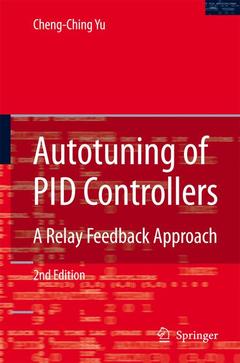Description
Autotuning of PID Controllers (2nd Ed., 2nd ed. 2006)
A Relay Feedback Approach
Author: Yu Cheng-Ching
Language: English
Subjects for Autotuning of PID Controllers:
Publication date: 03-2012
261 p. · 15.5x23.5 cm · Paperback
Approximative price 105.49 €
Subject to availability at the publisher.
Add to cartPublication date: 12-2006
261 p. · 15.5x23.5 cm · Hardback
Description
/li>Contents
/li>Comment
/li>
Recognising the benefits of improved control, the second edition of Autotuning of PID Controllers provides simple yet effective methods for improving PID controller performance. The practical issues of controller tuning are examined using numerous worked examples and case studies in association with specially written autotuning MATLAB® programs to bridge the gap between conventional tuning practice and novel autotuning methods.
The extensively revised second edition covers:
? Derivation of analytical expressions for relay feedback responses.
? Shapes of relay responses and improved closed-loop control and performance assessment.
? Autotuning for handling process nonlinearity in multiple-model-based cases.
? The impact of imperfect actuators on controller performance.
This book is more than just a monograph, it is an independent learning tool applicable to the work of academic control engineers and of their counterparts in industry looking for more effective process control and automation.




